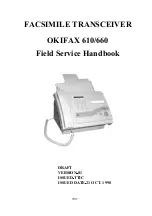
03
.1
3 EN
8
4.3
Servicing lead-acid batteries with armour plated cells
Water quality
Z
The quality of the water used to fill up electrolyte must correspond to purified or
distilled water. Purified water can be produced through distillation or ion
exchangers and is then suitable for the production of electrolyte.
4.3.1 Daily
– Charge the battery after each discharge.
– After charging, check the electrolyte level.
– If necessary, add purified water up to the rated level after charging.
Z
The height of the electrolyte level should not be below the cell baffle or above the
top of the separator, or the "Min" and "Max" electrolyte markings respectively.
4.3.2 Weekly
– After re-charging, carry out a visual inspection for dirt and physical damage.
– If the battery is charged regularly according to the IU characteristic, carry out a
compensation charge.
4.3.3 Monthly
– Towards the end of the charging process measure and record the voltages of all
the cells with the charger switched on.
– After charging measure and record the electrolyte density and the electrolyte
temperature in all the cells.
– Compare the results with the previous ones.
Z
If you find significant differences compared with the previous measurements or
differences between the cells, contact the manufacturer's customer service
department.
4.3.4 Annually
– Measure the truck insulation resistance in accordance with EN 1175-1.
– Measure the battery insulation resistance in accordance with EN 1987-1.
Z
In accordance with DIN EN 50272-3 the battery insulation resistance should not be
less than 50
Ω
per volt of rated voltage.
03
.1
3 EN
8
4.3
Servicing lead-acid batteries with armour plated cells
Water quality
Z
The quality of the water used to fill up electrolyte must correspond to purified or
distilled water. Purified water can be produced through distillation or ion
exchangers and is then suitable for the production of electrolyte.
4.3.1 Daily
– Charge the battery after each discharge.
– After charging, check the electrolyte level.
– If necessary, add purified water up to the rated level after charging.
Z
The height of the electrolyte level should not be below the cell baffle or above the
top of the separator, or the "Min" and "Max" electrolyte markings respectively.
4.3.2 Weekly
– After re-charging, carry out a visual inspection for dirt and physical damage.
– If the battery is charged regularly according to the IU characteristic, carry out a
compensation charge.
4.3.3 Monthly
– Towards the end of the charging process measure and record the voltages of all
the cells with the charger switched on.
– After charging measure and record the electrolyte density and the electrolyte
temperature in all the cells.
– Compare the results with the previous ones.
Z
If you find significant differences compared with the previous measurements or
differences between the cells, contact the manufacturer's customer service
department.
4.3.4 Annually
– Measure the truck insulation resistance in accordance with EN 1175-1.
– Measure the battery insulation resistance in accordance with EN 1987-1.
Z
In accordance with DIN EN 50272-3 the battery insulation resistance should not be
less than 50
Ω
per volt of rated voltage.
Summary of Contents for EZS 350 XL
Page 1: ...08 09 11 14 51133023 EZS 350 350 XL C40 Operating instructions G EZS 350 XL EZS C40 EZS 350 ...
Page 3: ...11 14 EN 4 ...
Page 9: ...0506 GB 2 ...
Page 18: ...17 11 14 EN 3 2 Dimensions ...
Page 25: ...11 14 EN 24 ...
Page 29: ...11 14 EN 28 ...
Page 39: ...11 14 EN 38 ...
Page 42: ...41 11 14 EN 2 Displays and Controls 44 4 3 45 41 8 9 7 6 10 41 8 11 43 5 10 42 ...
Page 77: ...11 14 EN 76 ...















































